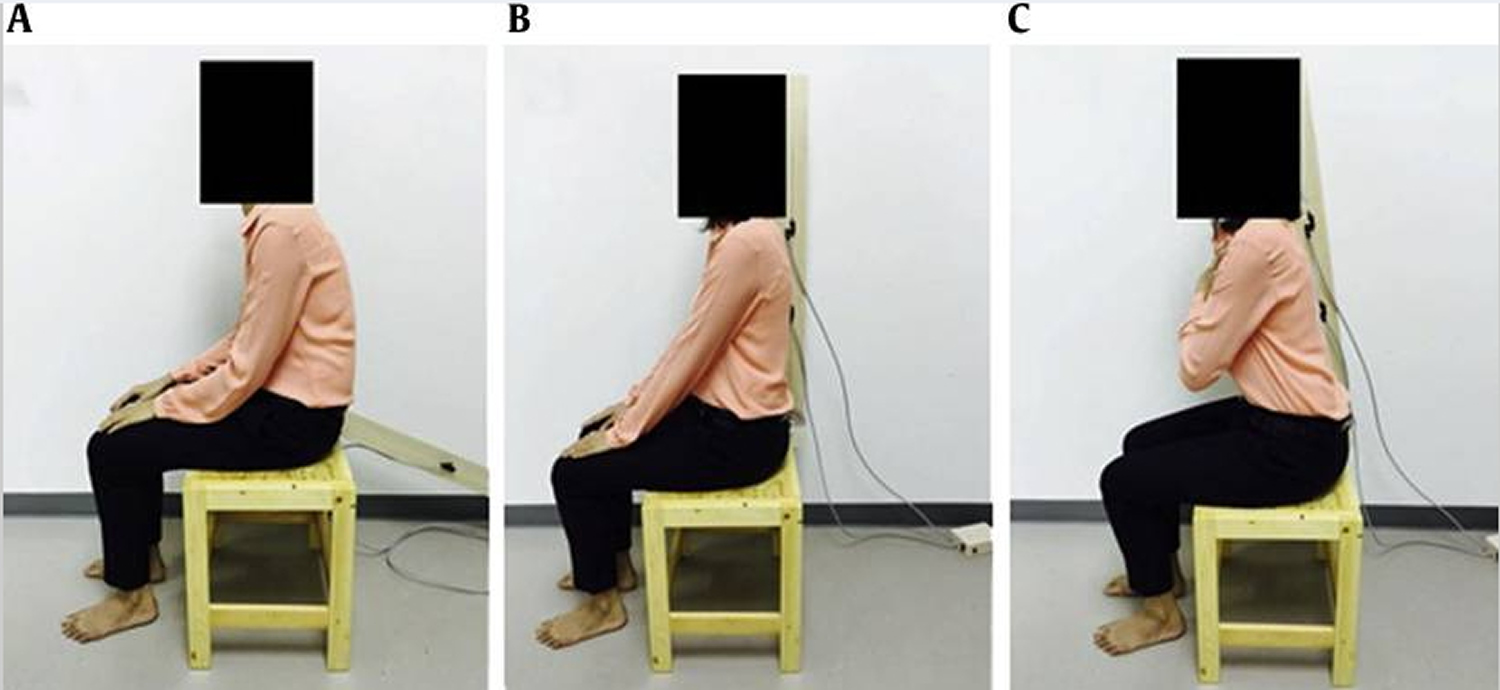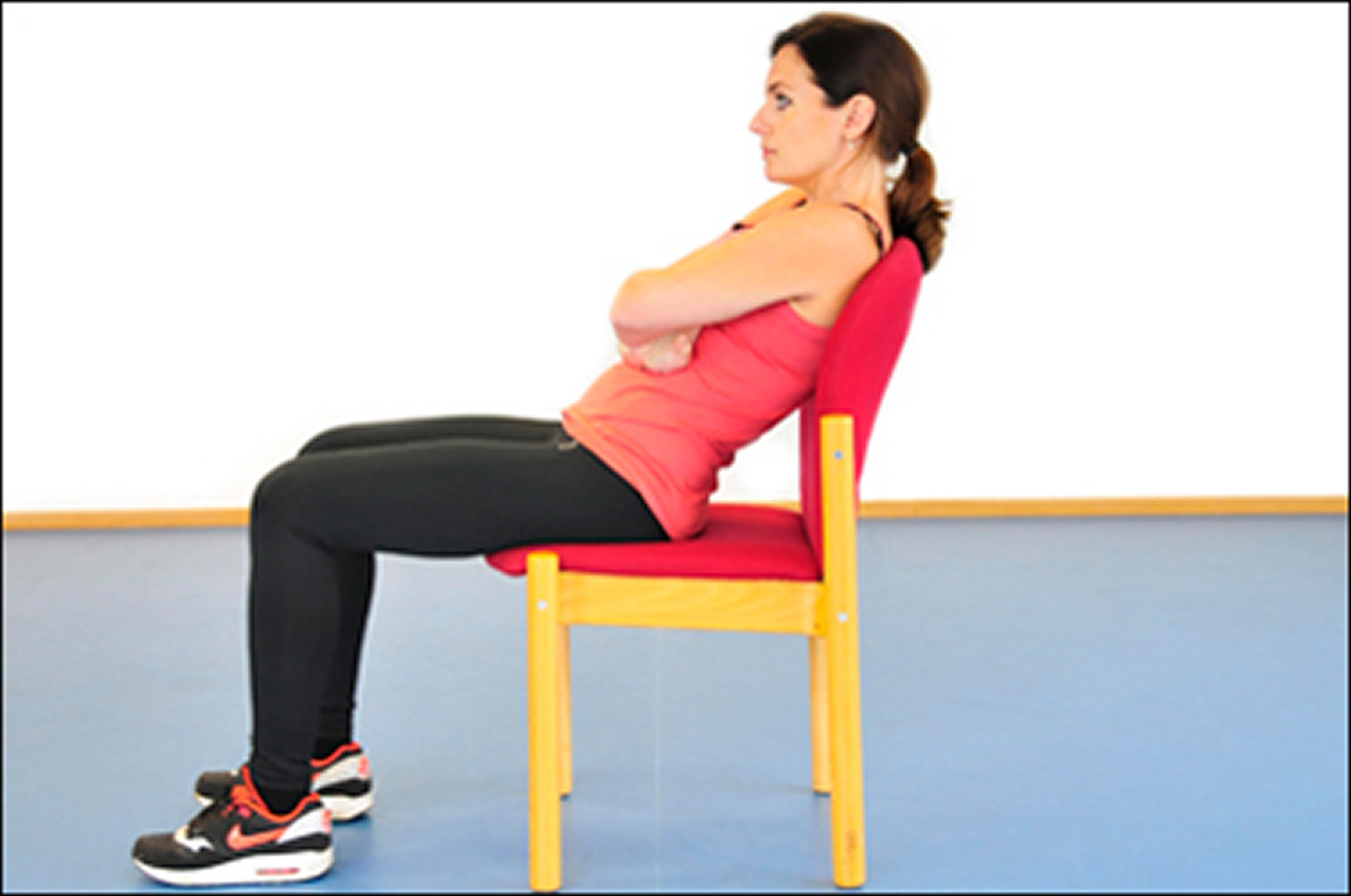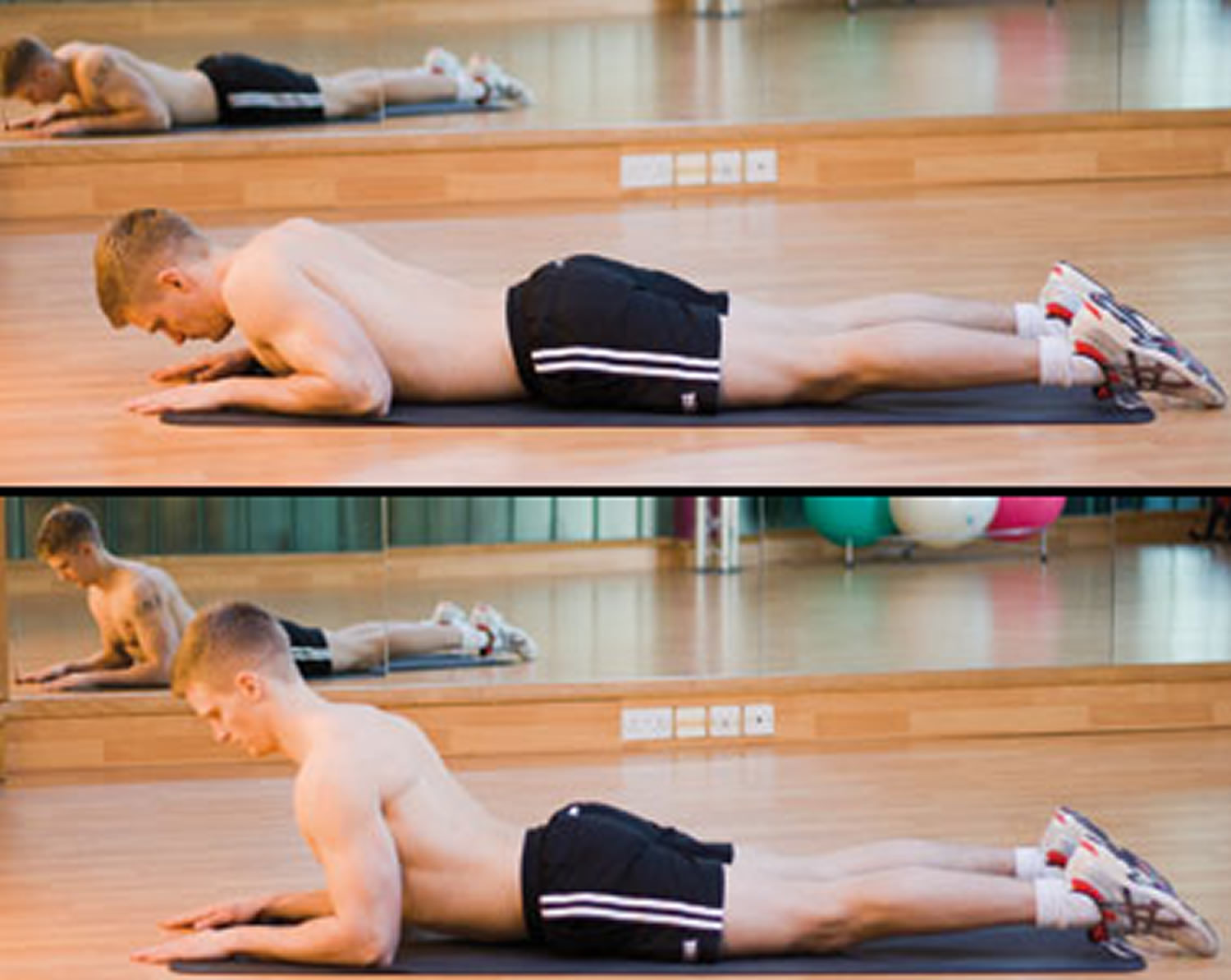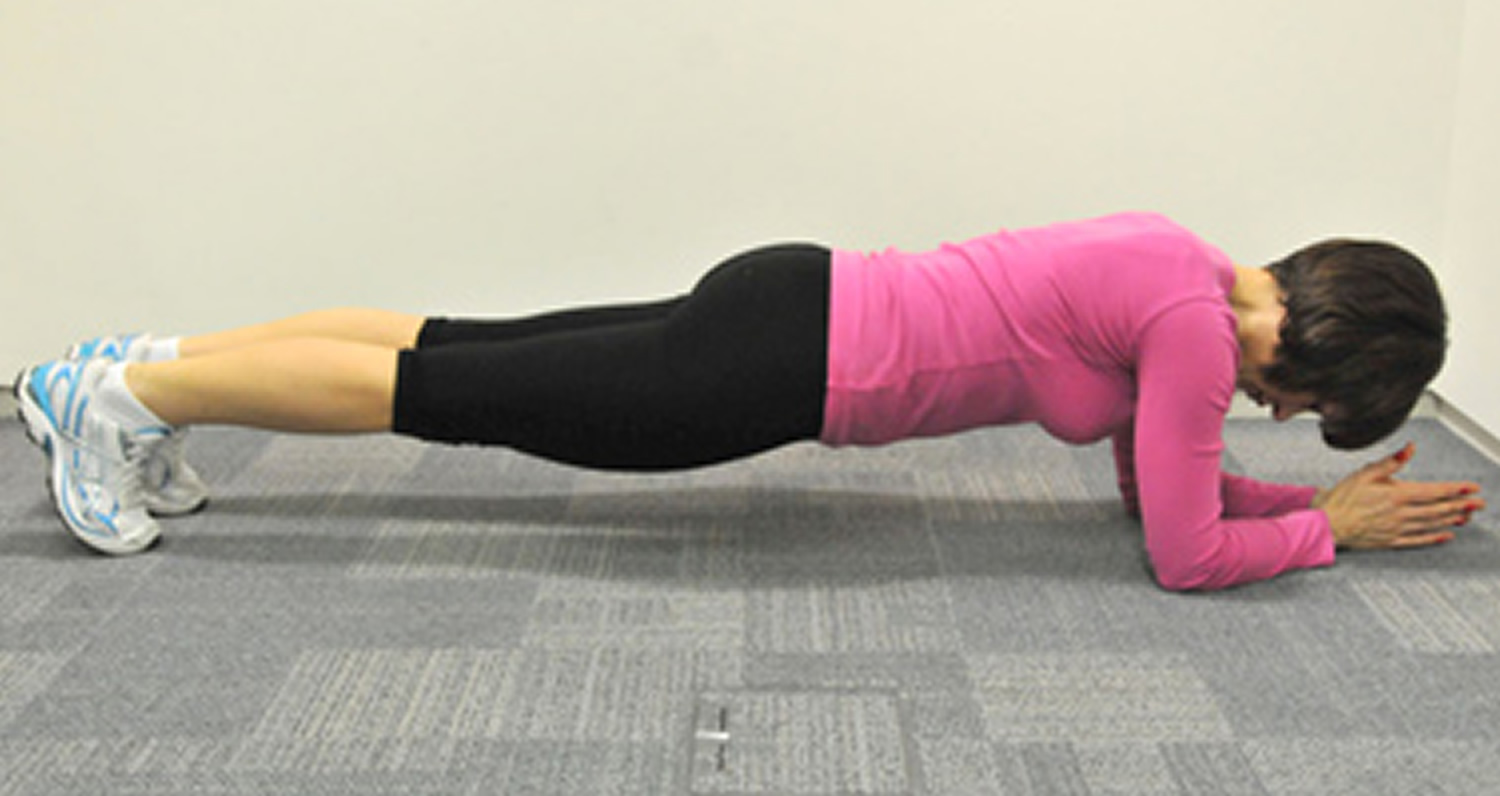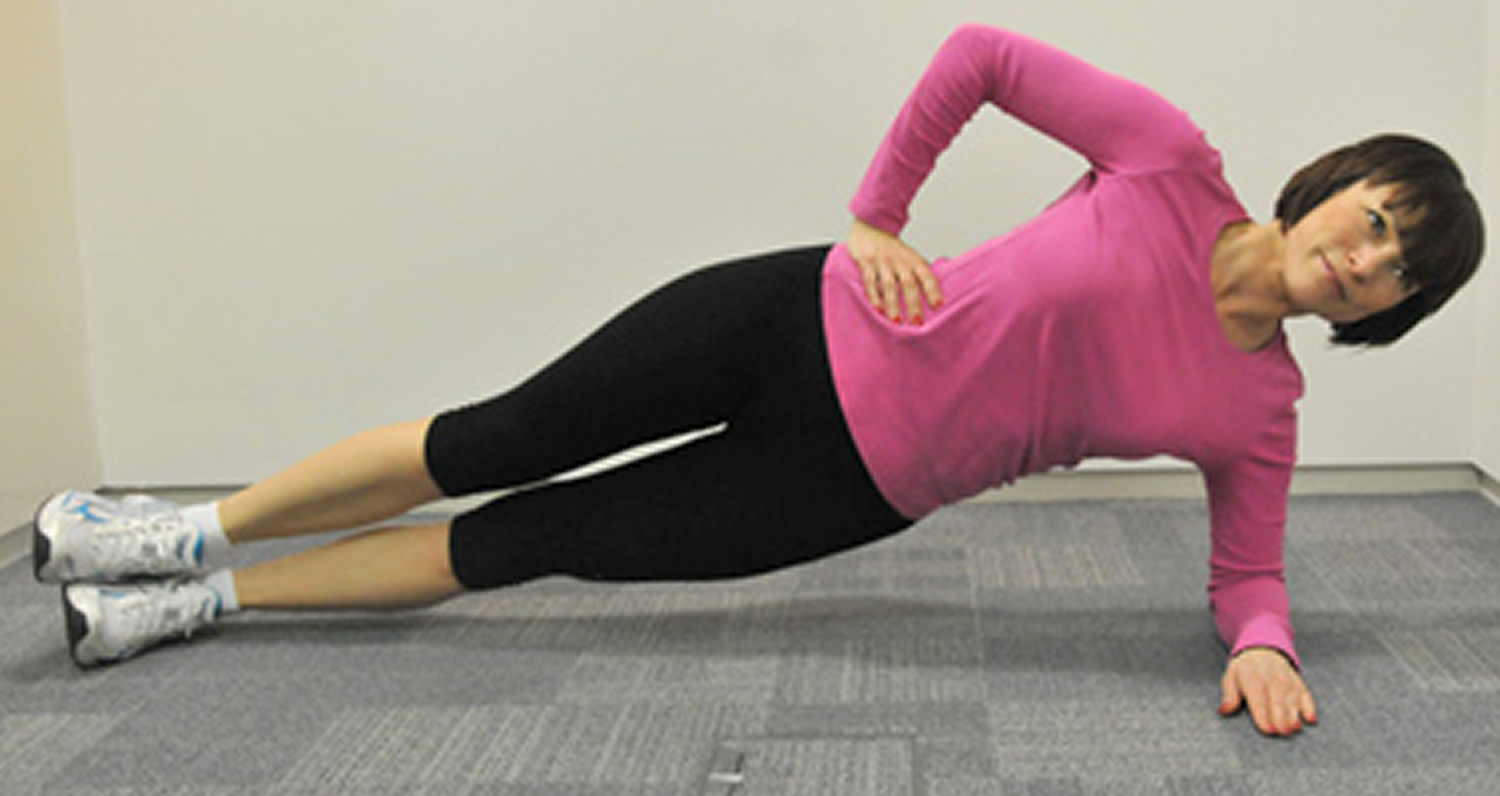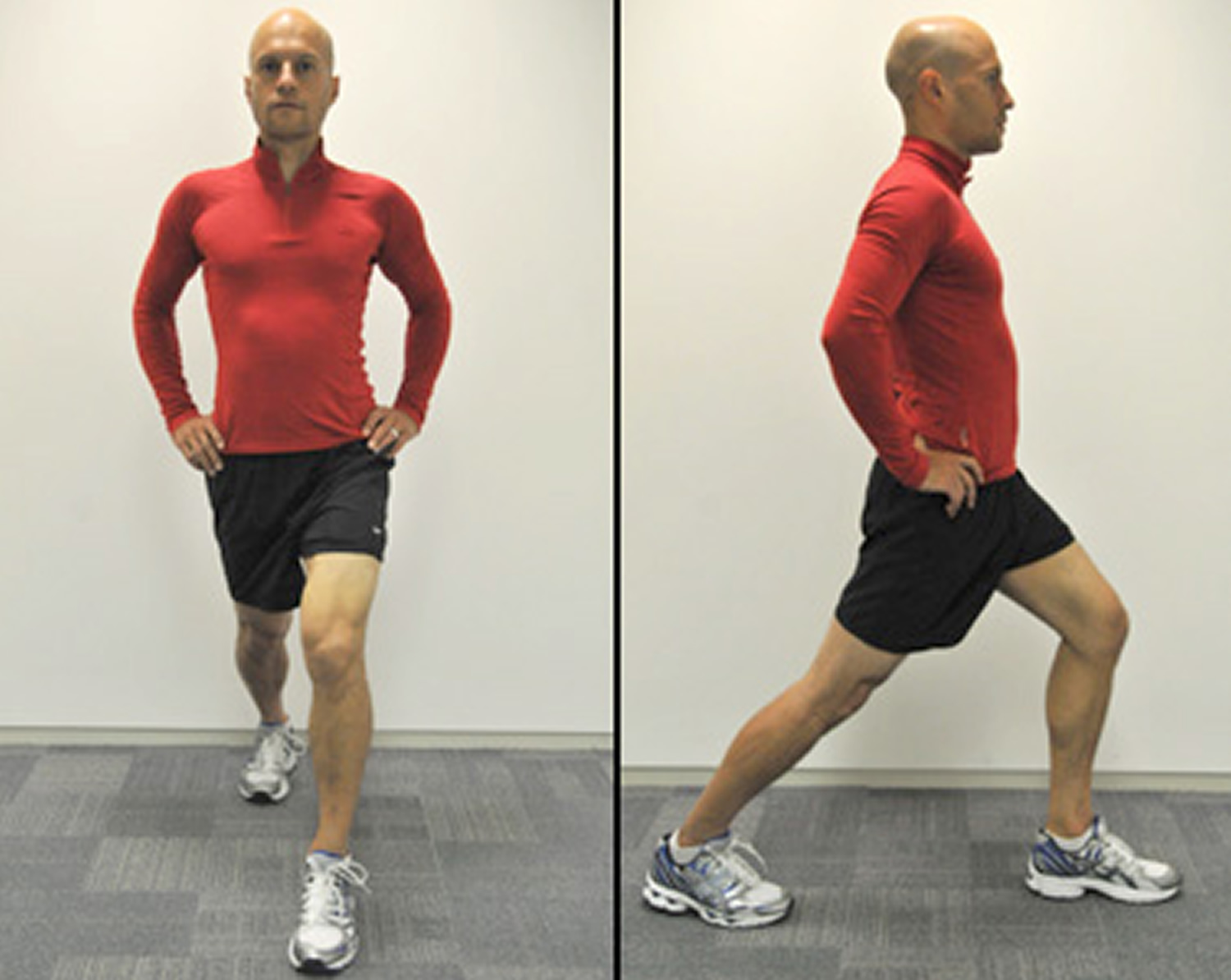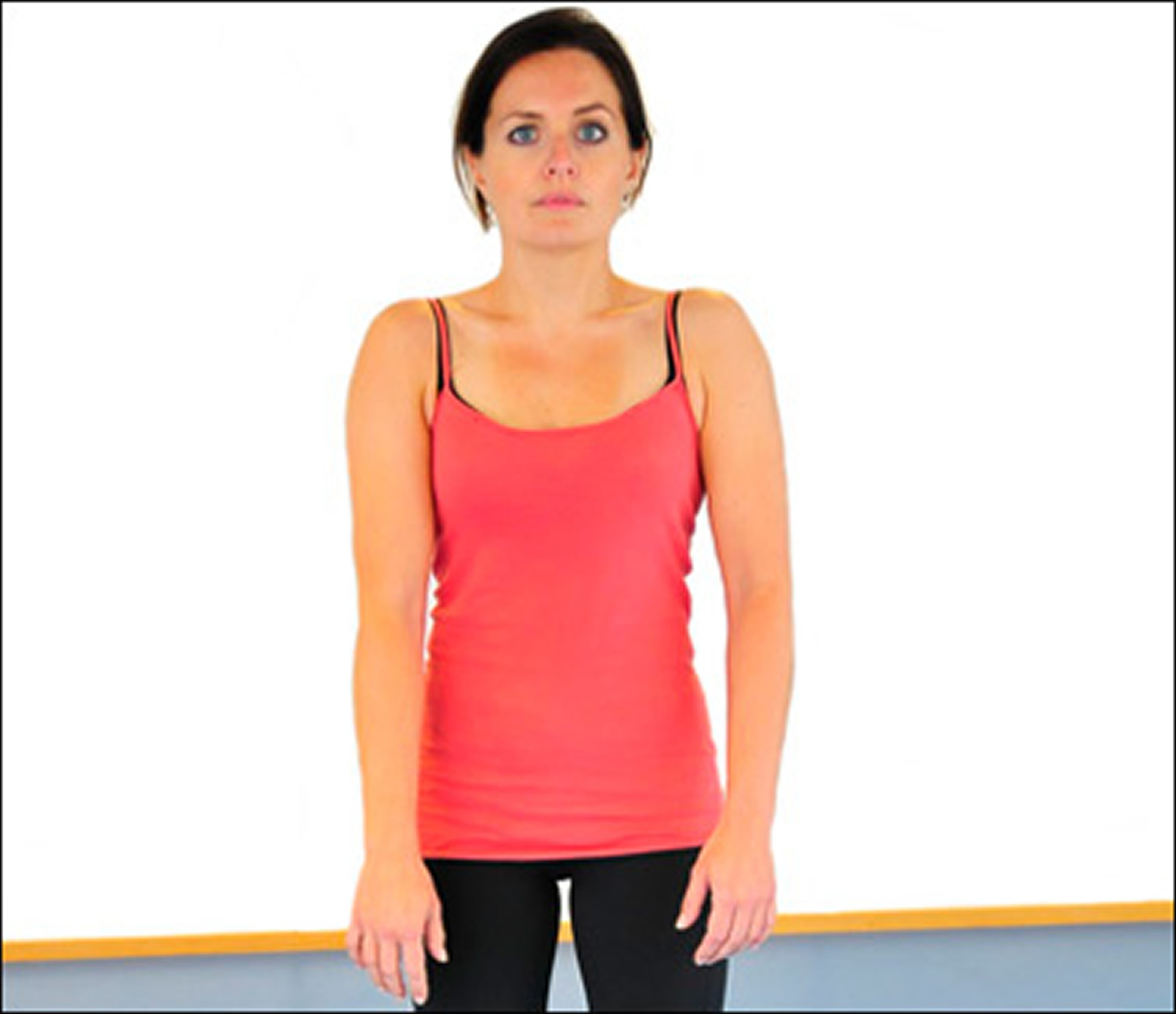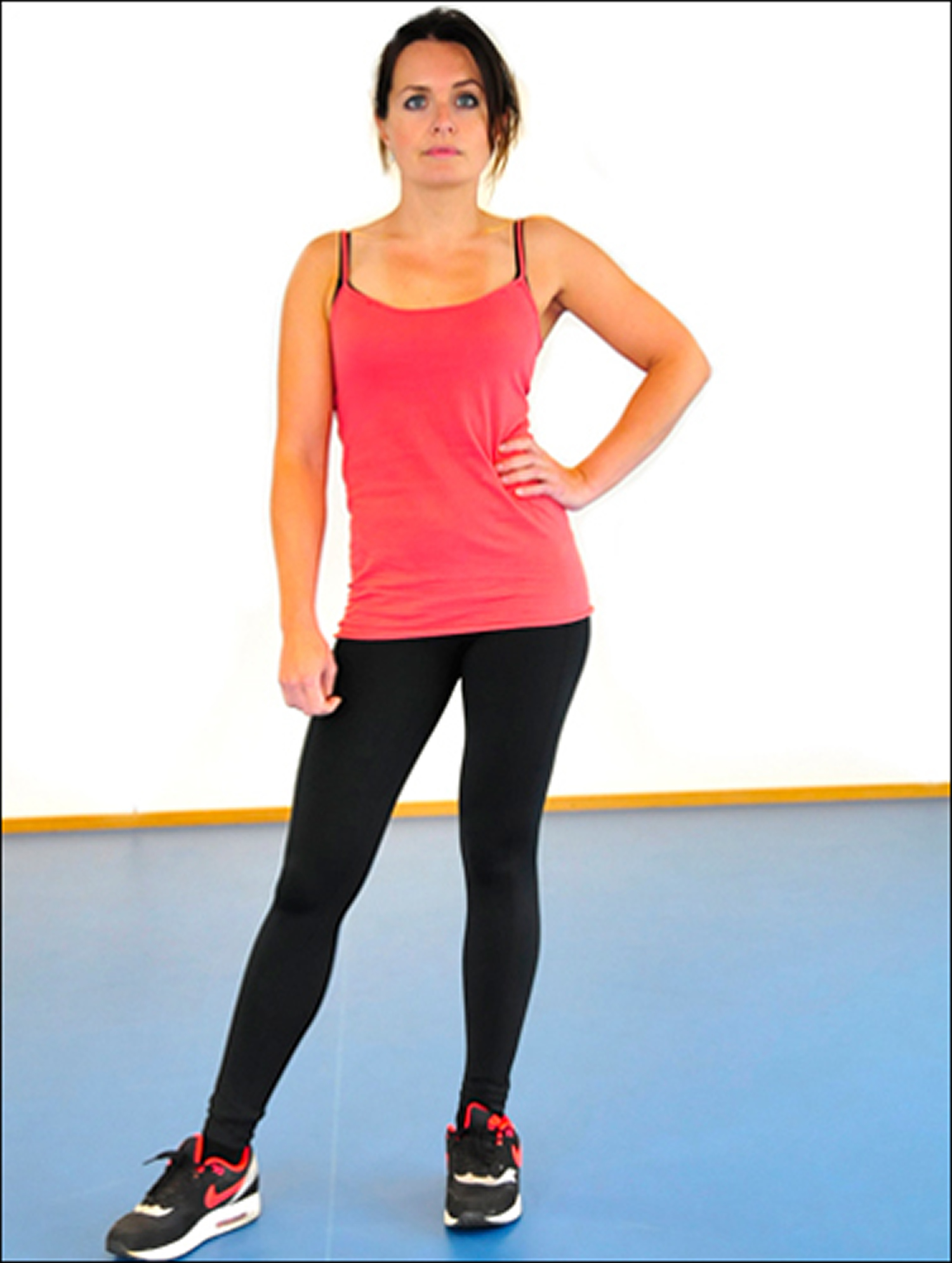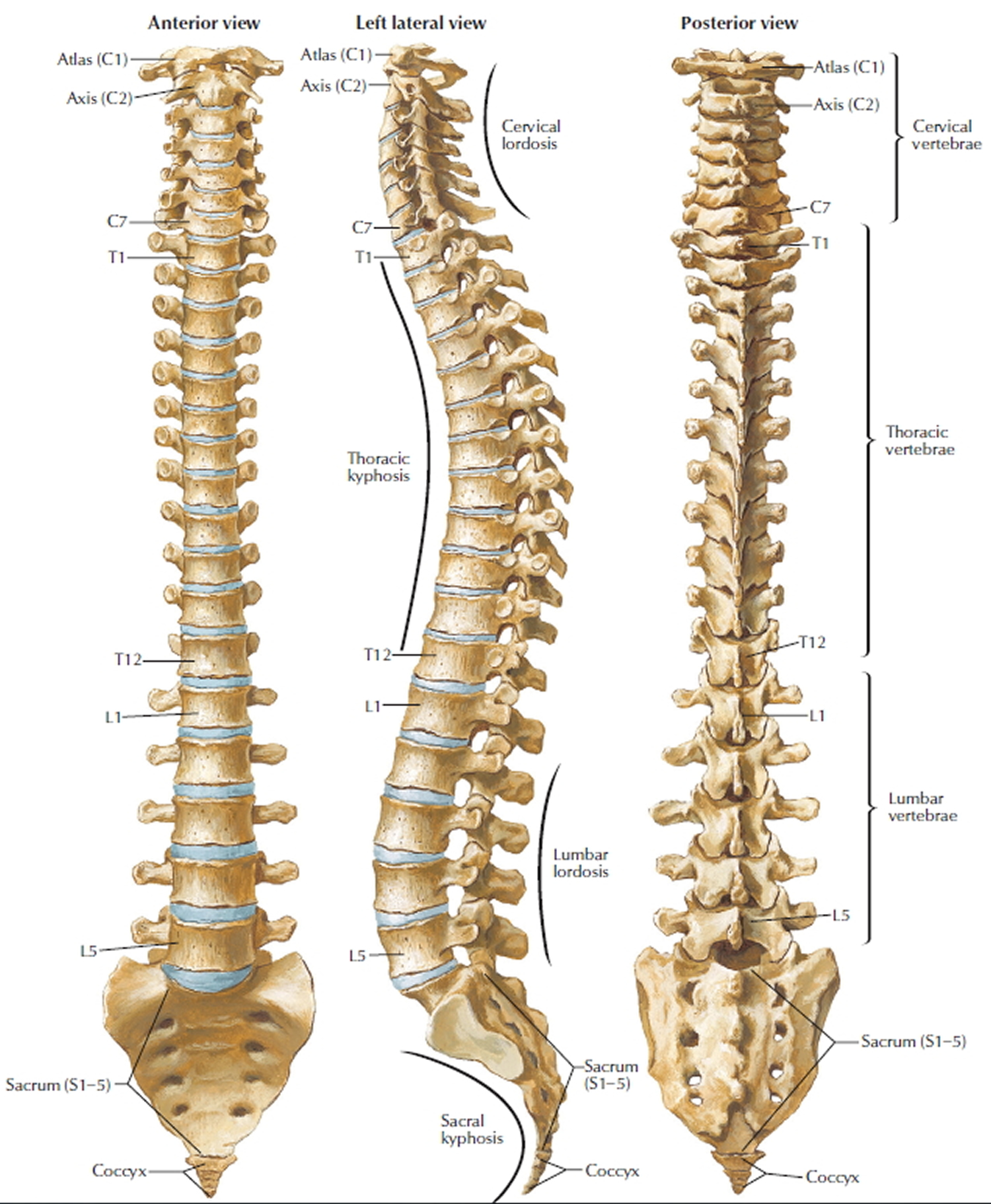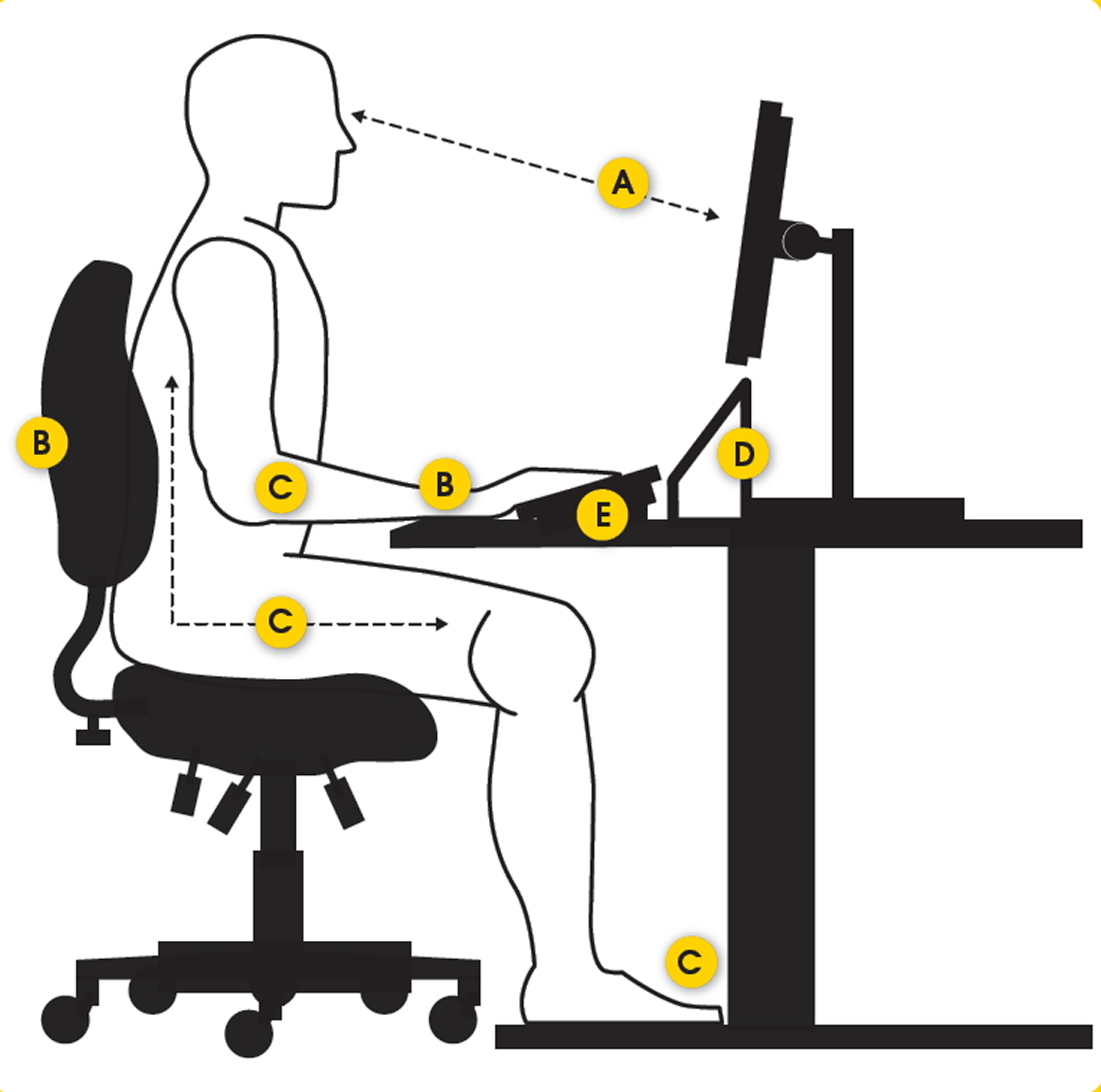Contents
How to sit properly
Low back pain is a major problem for office workers. Individuals adopting poor postures during prolonged sitting have a considerably increased risk of experiencing low back pain. The findings of this study 1 demonstrate that office workers with chronic low back pain sat significantly more asymmetrically, i.e., sitting with trunk leaning toward either left or right side, than their healthy counterparts in both comfortable and neutral sitting postures. During 1 hour of sitting, both chronic low back pain and healthy workers appeared to assume slumped sitting postures after 20 minutes of sitting, which may partly be explained by increased discomfort experienced in the low back. Healthy workers had significantly more frequent postural shifts than chronic low back pain workers during prolonged sitting, despite chronic low back pain participants reporting significantly greater low back discomfort than their healthy counterparts. Significantly greater asymmetrical sitting posture and more frequent postural shift were found toward the end of the 1-hour sitting period in both chronic low back pain and control groups.
Peak pressure is the maximal pressure around ischial tuberosity. This is calculated between the maximum four adjacent sensors of seat pressure mapping. The peak pressure ratio was calculated by the higher peak pressure side to lower peak pressure side. A higher peak pressure ratio indicates more asymmetrical sitting between left and right sides during sitting. Office workers with chronic low back pain had significantly greater peak pressure ratio, which is an index of asymmetrical sitting posture, than their healthy counterparts in both comfortable and neutral sitting postures. Differences in peak pressure ratio between chronic low back pain and control groups remained throughout the 1-hour sitting period. Patients with chronic low back pain have been shown to demonstrate poorer postural control of the lumbar spine than healthy controls 2. Pelvic asymmetry has also been shown to cause higher stress on the lumbar spine in individuals with low back pain 3 and changes in soft tissue tightness 4, thus making the spine susceptible to injury. Neutral sitting posture, consisting of sitting with slight lumbar lordosis and a relaxed thorax, has been proposed as an optimal seat posture at work 5. Neutral sitting posture was associated with increased internal oblique and transversus abdominis muscles activity compared with slumped sitting posture 6. This study 7 examined the perceived body discomfort and trunk muscle activity in different prolonged (1 hour) sitting postures, i.e., upright, slumped, and forward leaning sitting postures. The results showed that the highest low back discomfort after 1 hour of sitting occurred with the forward leaning posture, followed by the upright and slumped sitting postures. The forward leaning sitting posture was associated with increased iliocostalis lumborum pars thoracis and superficial lumbar multifidus muscle activity, and the upright sitting posture was associated with increased increased internal oblique/transversus abdominis and iliocostalis lumborum pars thoracis muscle activity. The findings from this study suggest that the upright sitting posture may be an appropriate sitting posture to prevent the development of low back pain in individuals who usually spend a long period of time sitting. Another study 1 showed that asymmetry in the sitting posture in chronic low back pain participants reduced significantly when they sat in a neutral sitting posture, although it still persisted and was greater than that in healthy participants. The results lend further support to the notion that the neutral sitting posture, which leads to more symmetrical sitting posture, is healthy for the low back.
Figure 1. Sitting postures – (A) Slumped sitting. (B) Upright sitting. (C) Forward leaning sitting
[Source 7]After 20 minutes of sitting, both participants with and without chronic low back pain assumed sitting posture with significantly increased average pressure (AP) at posterior seat, indicating pelvic backward tilting or slumped sitting posture. Average pressure is the total pressure divided by the total sitting contact surface area.Sitting with backward leaning is usually achieved by a backward pelvic rotation, resulting in lumbar kyphosis, and less than 25% of the body weight is transmitted to the floor 8. Backward rotation caused by long hours spent at the visual display terminal has been shown to generate load on the lumbar spine and increase intradiskal pressure 9. When the seat position is not optimal, more muscular activity may be needed for stabilization resulting in a distinctly larger pressure in the disk 10. Also, internal oblique and transversus abdominis muscle fatigue was induced by slumped sitting posture after 1 hour of sitting in office workers 11. Patients who habitually adopt passive spinal postures or slump may decondition their lumbar stabilizing muscles 12, leading to increased passive system loading, injury, and pain 13. Sustained stretch of passive lumbar structures in combination with essentially silent muscles may exacerbate low back pain in office workers 14. One of several identified interventions to reduce the onset and severity of low back pain included periodic rest breaks. Previous studies suggested that frequent, short, rest breaks resulted in short-term decrease in both discomfort and postural immobility 15.
In terms of postural shift, healthy workers had more frequent postural shifts (the combination of shift in the frontal and sideway planes) than chronic low back pain workers by 43% during 1 hour of sitting. The frequency of postural shift in healthy participants reported in a study (9.6 ± 8.3 times/h) was in line with a previous study (7.8 ± 5.2 times/h) 16. The results concur with a study by Dunk and Callaghan 17, who reported less frequent postural shift in individuals with low back pain compared with healthy individuals. Excessive load transmission and tissue deformation associated with prolonged loading in a certain posture may contribute to degenerative change in spinal tissues 18. Postural shift has been found to increase subcutaneous oxygen saturation, which positively influences tissue viability 19. Also, postural shifts may alleviate low back discomfort and low back pain during prolonged sitting through alternating activity between different parts of the trunk muscles 20. However, it is interesting to note that despite chronic low back pain workers having significantly greater postural discomfort than healthy workers after 20 minutes of sitting, chronic low back pain workers changed their sitting postures less frequently than their healthy counterparts during 1-hour sitting. The findings shed some light on the notion that sitting characteristics, particularly frequency of postural shift, may partly relate to the cause of low back pain in those required to sit for long periods. Further research should examine the roles of these sitting characteristics on the development of low back pain in workers who are required to sit for long hours.
Why sitting too much is bad for your health
You know you need to be more active, but there is increasing evidence that you also need to spend less time sitting down.
However, there is currently not enough evidence to set a time limit on how much time people should sit each day.
Nevertheless, some countries – such as Australia, the US and Finland – have made recommendations that children limit screen time, such as TV and video games, to just one to two hours a day.
Recent research published in the Lancet 2016 21 has suggested that exercising at least 60 minutes a day can offset the negative effects of sitting too much throughout the day. According to that research, high levels of moderate intensity physical activity (i.e, about 60–75 min per day) seem to eliminate the increased risk of death associated with more than eight hours a day of sitting. However, this high activity level attenuates, but does not eliminate the increased risk associated with high TV-viewing time. These results provide further evidence on the benefits of physical activity, particularly in societies where increasing numbers of people have to sit for long hours for work and may also inform future public health recommendations. Therefore reducing sitting may be an additional health-enhancing strategy on top of physical exercise.
Multiple studies 22 have demonstrated that reducing and replacing sitting with light intensity walking improves glucose control after food consumption. That means glucose levels that do not spike too high, or dip too low. This may be explained by the way working muscles can use up some of the glucose in our system, helping to keep glucose in the optimal range.
Evidence 23 suggests that when it comes to glucose control, light intensity physical activity spread across the day can be superior to a day in which a single bout of moderate to vigorous exercise is performed in the morning. Even when the total energy expenditure of the light intensity activity is equal to the energy expenditure of the single bout of higher intensity activity.
The link between illness and sitting first emerged in the 1950s, when researchers found London bus drivers were twice as likely to have heart attacks as their bus conductor colleagues. There has been an explosion of research on the ills of sitting in the past few years, prompted by our increasingly sedentary lifestyles.
It is thought excessive sitting slows the metabolism – which affects your ability to regulate blood sugar and blood pressure, and metabolize fat – and may cause weaker muscles and bones.
Essentially, the body is ‘shutting down’ while sitting and there is little muscle activity.
Research on astronauts in the early 70s found life in zero gravity was linked with accelerated bone and muscle loss and ageing.
Sitting for an extended period of time is thought to simulate, albeit to a lesser degree, the effects of weightlessness on astronauts. With the current body of evidence, scientists don’t have a definitive answer to what’s happening.
The research on NASA astronauts suggests that on their return from space, even light walking was effective in overcoming the negative effects of weightlessness.
Breaking up sitting time engages your muscles and bones, and gives all your bodily functions a boost – a bit like revving a car’s engine.
To reduce your risk of ill health from inactivity, you are advised to exercise regularly – at least 150 minutes a week – and reduce sitting time.
Studies 24, 25 have linked excessive sitting with being overweight and obese, type 2 diabetes, some types of cancer, and early death.
Sitting for long periods is thought to slow the metabolism, which affects the body’s ability to regulate blood sugar, blood pressure and break down body fat.
Many adults in the US spend more than seven hours a day sitting or lying, and this typically increases with age to 10 hours or more.
This includes watching TV, using a computer, reading, doing homework, traveling by car, bus or train but does not include sleeping.
High sitting time and brain function
Studies investigating the effects of excessive sitting on brain function have had mixed results. Laboratory studies both support 26 and fail to support 27, the idea that a day of sitting can impair performance on memory related tasks, relative to a day where sitting is interrupted by regular activity breaks.
Other types of studies 28 that track a large number of people over a number of years suggest an association between higher sitting time and impaired brain function. But drawing conclusions from these studies is made difficult by the multitude of different measurements used. Generally, methods that do not rely on the self-reporting of participants are preferred, because self-reporting isn’t always accurate. This isn’t always practical though.
Apart from directly measuring performance on cognitively demanding tasks, another approach is to measure something that would theoretically support improved brain function. For example, researchers at New Mexico Highlands University 29 demonstrated that foot impact during walking sends pressure waves through blood vessels to increase brain blood flow.
Brain blood flow is involved in regulating supply of glucose to the brain, and this likely has implications for brain health over time. For example, scientists know decreases in brain blood flow are associated with a more rapid decline in brain function in those with Alzheimer’s disease 30. For scientists, the way in which sitting is likely to affect brain function poses a research challenge. Based on the available evidence, it’s more likely that reducing sitting would slow cognitive decline, rather than improve cognitive function.
Despite a current lack of conclusive studies linking brain health and sitting, reducing sitting time is already advised to prevent other adverse health outcomes linked to poor glucose control 31. With improved glucose control in mind, reducing sitting is especially important after meals.
So take a walk after lunch, wash the dishes by hand after dinner and take an active commute to and from work if possible. There is much opportunity to reduce sitting time throughout the day, and therefore much potential to have a positive impact on health.
Age-specific advice
The recommendations to reduce sitting time apply to all age groups.
Under-5s
In children under five, the advice is to limit the time they spend watching TV, traveling by car, bus or train, or being strapped into a buggy.
There is emerging evidence that sedentary behavior in the early years is associated with overweight and obesity, as well as lower cognitive development.
While this may be a challenge for busy parents, the advice reflects growing awareness that early life experiences and habits impact upon your health as adults.
There is a need to establish healthy patterns of behavior during the early years in order to protect against possible health detriments in the future.
Tips to reduce sitting time:
- reduce time spent in infant carriers, car seats or highchairs
- reduce time spent in walking aids or baby bouncers
- reduce time spent in front of the TV or other screens
Children and young people
Research suggests that children and young people in households with multiple TVs and computers tend to sit more.
For children aged 5 to 18 years, reducing sitting time includes anything that involves moving in and around the home, classroom or community.
Tips to reduce sitting time:
- consider ways for children to “earn” screen time
- agree a family limit to screen time per day
- make bedrooms a TV- and computer-free zone
- set “no screen time” rules to encourage kids to be active
- encourage participation in house chores such as setting the table or taking the bins out
- choose gifts such as a scooter, skateboard, ball or kite to encourage active play
Parents could lead by example by also reducing their TV time and other sitting-based tasks.
Adults
Adults aged 19 to 64 are advised to try to sit down less throughout the day, including at work, when traveling and at home.
Tips to reduce sitting time:
- stand on the train or bus
- take the stairs and walk up escalators
- set a reminder to get up every 30 minutes
- place a laptop on a box or similar to work standing
- stand or walk around while on the phone
- take a walk break every time you take a coffee or tea break
- walk to a co-worker’s desk instead of emailing or calling
- swap some TV time for more active tasks or hobbies
Older adults
Some older adults (aged 65 and over) are known to spend 10 hours or more each day sitting or lying down, making them the most sedentary population group.
It could be partly due to reduced functionality or ill health, but there are also social norms expecting those in later years to ‘slow down’ and rest and that is not helpful.
Older adults should aim to minimize the time they spend in extended periods of sitting each day.
Sitting needs breaking up. Long periods of TV should be avoided, and you should try to do activities that involve light movement and being ‘on your feet’ as much as possible.
Do some tasks standing, like having coffee and chats, or even watching TV.
Tips to reduce sitting time:
- avoid long periods sat in front of a TV or computer
- stand up and move during TV advert breaks
- stand or walk while on the phone
- use the stairs as much as possible
- take up active hobbies such as gardening and DIY
- join in community-based activities, such as dance classes and walking groups
- take up active play with the grandchildren
- do most types of housework
Common posture mistakes and fixes
Here are eight common posture mistakes, and how to correct them with strength and stretching exercises.
If you have back pain, improving your posture is unlikely to address the root cause of your pain, but it may help alleviate muscle tension.
Correcting your posture may feel awkward at first because your body has become so used to sitting and standing in a particular way.
But with a bit of practice, good posture will become second nature and be one step to helping your back in the long term.
1) Slouching in a chair
Slouching doesn’t always cause discomfort, but over time this position can place strain on already sensitised muscles and soft tissues. This strain may increase tension in the muscles, which may in turn cause pain.
Figure 2. Slouching in a chair
Get into the habit of sitting correctly. It may not feel comfortable initially because your muscles have not been conditioned to support you in the correct position.
Exercises to strengthen your core and buttock muscles, and back extensions, will help correct a slouching posture.
Exercises to correct a slumping posture:
- Bridges
- Back extensions
- Plank
Bridges
Target: buttocks and lower back
Start position: Lie on your back with your knees bent and heels close to your bottom. Your feet should be shoulder-width apart and flat on the floor.
Action: Raise your hips to create a straight line from your knees to your shoulders. As you come up, tighten your abdominals and buttocks. Lower yourself gently to the starting position.
Repeat 8 to 10 times.
Tips:
- don’t let your knees point outwards
- keep your chin slightly tucked in
- contract your buttocks, not your hamstrings, as you rise
Figure 3. Bridges
Back extensions
Start position: Lie on your front and rest on your forearms, with your elbows bent at your sides. Look towards the floor and keep your neck straight.
Action: Keeping your neck straight, arch your back up by pushing down on your hands. You should feel a gentle stretch in the stomach muscles. Breathe and hold for 5 to 10 seconds. Return to the starting position.
Repeat 8 to 10 times.
Tips:
- don’t bend your neck backwards
- keep your hips on the floor
Figure 4. Back extensions
Plank
Target: lower back and core muscles
Start position: Lie on your front propped up on your forearms and toes. Keep your legs straight and hips raised to create a straight and rigid line from head to toe.
Action: Your shoulders should be directly above your elbows. Focus on keeping your abs contracted during the exercise. Hold this position for 5 to 10 seconds and repeat 8 to 10 times.
Tips:
- Don’t allow your lower back to sink during the exercise.
- You should be looking at the floor.
- For an easier version, perform the plank with your knees on the floor.
Figure 5. Plank
Side plank
Target: lower back and core muscles
Start position: Lie on your side propped up on an elbow. Your shoulder should be directly above your elbow. Straighten your legs and raise your hips to create a straight and rigid line from head to toe.
Action: Keep your neck long and your shoulders down and away from your ears. Keep your abs contracted during the exercise. Hold this position for 5 to 10 seconds and repeat 8 to 10 times. Repeat the exercise on the other side.
Tips:
- Keep your hips forward during the exercise.
- Don’t let your lower back sink.
- For an easier version, perform the side plank with your knees on the floor.
Figure 6. Side plank
2) Hunched back and ‘text neck’
Figure 7. Text neck and hunched back
Hunching over your keyboard is usually a sign that you have a tight chest and a weak upper back.
Over time, this type of posture can contribute to you developing a rounded upper back, which can cause shoulder and upper back stiffness.
When hunching over a computer, your head may tend to lean forward, which can lead to poor posture. Using a mobile can cause similar problems dubbed “text neck”.
Upper back, neck and rear shoulder strengthening exercises, chest stretches and neck posture drills are recommended to help correct a hunched back.
Exercises to correct a hunched back:
- Gently lengthen your neck upwards as you tuck in your chin
- Seated rows in a gym or pull-ups
- Chest stretches
3) Poking your chin
The poking chin posture can be caused by sitting too low, a screen set too high, a hunched back, or a combination of all three.
Figure 8. Poking chin posture
Correcting a poking chin involves improving your sitting habits and exercises to correct your posture.
How to correct a poking chin:
- Gently lengthen your neck upwards as you tuck in your chin
- Bring your shoulder blades down and back towards your spine
- Pull in your lower tummy muscles to maintain a natural curve in your lower back
- Adjust your seating
4) Cradling your phone
Holding your phone handset between your ear and shoulder places strain on the muscles of the neck, upper back and shoulders.
Figure 9. Cradling your phone
The neck and shoulders are not designed to hold this position for any length of time.
Over time this posture can place strain on the muscles and other soft tissues, and lead to muscle imbalances between the left and right side of your neck.
Try to get into the habit of holding the phone with your hand, or use a hands-free device.
Exercises for neck stiffness and pain:
- Chest stretches (see chest stretches video above)
- Neck stretches: gently lower your left ear towards your left shoulder. Hold for 10-15 deep breaths. Repeat on opposite side.
- Neck rotations: slowly turn your chin towards one shoulder. Hold for 10-15 deep breaths. Repeat on opposite side.
5) Standing with a flat back
A flat back means your pelvis is tucked in and your lower back is straight instead of naturally curved, causing you to stoop forward.
People with a flat back often find it difficult standing for long periods.
This posture is often caused by muscle imbalances, which encourage you to adopt such a position. Spending long periods sitting down can also contribute to a flat back.
A flat back also tends to make you lean your neck and head forwards, which can cause neck and upper back strain.
Figure 10. Standing with a flat back
Exercises to strengthen your core, buttocks, neck and rear shoulder muscles, and back extensions, are recommended to help correct a flat back.
Exercises to correct a flat back:
- Plank
- Side-lying leg raises
- Chest stretches
- Seated rows in a gym or pull-ups
- Back extensions
Side-lying leg raise
Target: buttocks and lower back
Start position: Lie on your right-hand side with your right knee bent at 90 degrees, and your left leg straight and in line with your back.
Action: Press your left fingers into the top of your buttock to keep your left hip slightly tilting forward. Raise your left leg as far as you can without letting your hips tilt back. Slowly lower to the starting position.
Perform 8 to 10 times and repeat on the other side.
Tips:
- raise your leg, keeping it in line with your back
- feel your buttock muscles contracting as you raise your leg
- keep your abdominal muscles contracted throughout the exercise
Figure 11. Side-lying leg raises
6) Sticking your bottom out
If your bottom tends to stick out or you have a pronounced curve in your lower back, you may have hyperlordosis. This is an exaggerated inward curve of the lower back that creates a “Donald Duck” posture.
Wearing high heels, excessive weight around the stomach and pregnancy can all cause this posture.
Figure 12. Sticking your bottom out
Core and buttock strengthening exercises, hip flexor and thigh stretches, and making a conscious effort to correct your standing posture are recommended to help correct a sticking out bottom.
Exercises to correct a “Donald Duck” posture:
- Plank
- Side-lying leg raises
- Hip flexor stretches
- Standing thigh stretch
To help correct your standing posture, imagine a string attached to the top of your head pulling you upwards.
The idea is to keep your body in perfect alignment, maintaining the spine’s natural curvature, with your neck straight and shoulders parallel with the hips.
- Keep your shoulders back and relaxed
- Pull in your abdomen
- Keep your feet about hip distance apart
- Balance your weight evenly on both feet
- Try not to tilt your head forward, backwards or sideways
- Keep your legs straight, but knees relaxed
Watch a video on improving posture.
Hip flexor stretch
Step your left leg forward, keeping both feet pointing straight ahead. Keeping your back leg straight and avoiding sticking your buttock out and arching your back, slowly bend your front leg and push your right buttock forward until you feel a stretch across the front of your right hip joint – hold for 15 seconds. Repeat with the other leg.
Figure 13. Hip flexor stretch
7) Rounded shoulders
One way to tell if you’ve got rounded shoulders is to stand in front of a mirror and let your arms hang naturally by your sides.
If your knuckles face forward, it may indicate that you have a tight chest and a weak upper back, giving the appearance of rounded shoulders.
Figure 14. Rounded shoulders
Rounded shoulders are typically caused by poor posture habits, muscle imbalances and focusing too much on certain exercises, such as too much focus on chest strength while neglecting the upper back.
Exercises to strengthen your core, upper back and chest muscles will help correct rounded shoulders:
- Plank
- Bridges
- Seated rows in a gym or pull-ups
- Chest stretches
8) Leaning on one leg
Leaning more on one leg while standing can feel comfortable, especially if you’ve been standing for a while.
But instead of using your buttocks and core muscles to keep you upright, you place excessive pressure on one side of your lower back and hip.
Over time, you may develop muscle imbalances around the pelvis area, which can cause muscular strain in the lower back and buttocks.
Other causes of uneven hips include carrying heavy backpacks on one shoulder, and mothers carrying toddlers on one hip.
Figure 15. Leaning on one leg
To improve this posture, try to get into the habit of standing with your weight evenly distributed on both legs.
Exercises to strengthen your buttocks and core muscles will help correct uneven hips:
- Plank
- Side-lying leg raises
- Bridges
Good sitting posture
Your spine is strong and stable when you practice healthy posture. But when you slouch or stoop, your muscles and ligaments strain to keep you balanced — which can lead to back pain, headaches and other problems.
Your spine’s curves
A healthy back has three natural curves:
- An inward or forward curve at the neck (cervical curve)
- An outward or backward curve at the upper back (thoracic curve)
- An inward curve at the lower back (lumbar curve)
Good posture helps maintain these natural curves, while poor posture does the opposite — which can stress or pull muscles and cause pain.
Figure 16. Vertebral column
How to sit correctly
Working at a desk is a common cause of back and neck pain, often because you accommodate to your workstation rather than the other way around. For instance, many people strain to see a computer monitor that is too far away, too low, too high, too small or too dim. This compromises good posture. The average human head weighs almost 12 pounds (5.4 kilograms) — the equivalent of a bowling ball! When your neck is bent to 45 degrees, your head exerts nearly 50 pounds (23 kilograms) of force on your neck. In addition to straining joints and muscles in your neck and shoulders, the pressure affects your breathing and mood.
To alleviate this discomfort, redesign your workspace to encourage well-aligned posture. There are many ways to improve the ergonomics — efficiency and comfort level — of a typical workstation. Start by answering these questions.
Is your monitor positioned so that you can see it well without straining?
- Raise or lower the monitor or your chair so your eyes are level with the top of the screen. If you wear bifocals, you may need to lower the monitor another 1 to 2 inches.
- Move the monitor closer or farther away so that you can easily read the screen.
- Increase the font size you use.
- If using a laptop, link to a larger monitor.
Are your mouse and keyboard positioned so that you don’t have to reach up to use them?
- Lower your desk height or raise your chair so that your forearms are parallel to the floor or pointed slightly downward and your wrists are not pointing either upward or downward.
Do you keep frequently used tools within close range to minimize reaching?
- Keep your mouse nearby, and regularly change it from one side of your body to the other.
- Use a headset if you talk on the phone frequently.
- Find shortcut keys you can use while typing.
- Use a document holder so that you don’t have to look down frequently.
Does your chair allow you to maintain the normal curves in your spine, such as the curve in your low back?
- Raise or lower your chair so that you’re not sitting straight up at a 90-degree angle, but rather with a slightly reclined posture of 100 to 110 degrees.
- When you’re seated, do your feet touch the ground?
- Consider using a stool if you’ve elevated your chair and your feet no longer reach the ground.
- Maintain a couple of inches between the back of your knees and the chair.
If your chair has armrests, do they allow your shoulders to relax?
- Consider lowering or getting rid of the armrests so that your neck and shoulders can relax downward.
Correct sitting posture
If your work involves sitting a lot and using a computer, here are some tips to help you sit correctly.
Support your back
You can reduce your risk of back pain by adjusting your chair so your lower back is properly supported.
A correctly adjusted chair will reduce the strain on your back. Get one that is easily adjustable so you can change the height, back position and tilt.
Your knees should be slightly lower than your hips. Use a footrest, if it feels necessary.
Adjust your chair
Adjust your chair height so you can use the keyboard with your wrists and forearms straight and level with the floor. This can help prevent repetitive strain injuries.
Your elbows should be by the side of your body so the arm forms an L-shape at the elbow joint.
Rest your feet on the floor
Place your feet flat on the floor. If they’re not, ask if you can have a footrest, which lets you rest your feet at a level that’s comfortable.
Don’t cross your legs, as this may contribute to posture-related problems.
Place your screen at eye level
Your screen should be directly in front of you. A good guide is to place the monitor about an arm’s length away, with the top of the screen roughly at eye level.
To achieve this, you may need a monitor stand. If the screen is too high or too low, you’ll have to bend your neck, which can be uncomfortable.
Using the keyboard
Place your keyboard in front of you when typing. Leave a gap of about four to six inches (100mm-150mm) at the front of the desk to rest your wrists between bouts of typing.
Keep your arms bent in an L-shape and your elbows by your sides.
Some people like to use a wrist rest to keep their wrists straight and at the same level as the keys.
Keep your mouse close
Position and use the mouse as close to you as possible. A mouse mat with a wrist pad may help keep your wrist straight and avoid awkward bending.
If you’re not using your keyboard, push it to one side to move the mouse closer to you.
Avoid screen reflection
Your screen should be as glare-free as possible. If there’s glare on your screen, hold a mirror in front of the screen so you know what’s causing it.
Position the monitor to avoid reflection from overhead lighting and sunlight. If necessary, pull blinds across the windows.
Adjusting the screen’s brightness or contrast can make it much easier to use.
Working with spectacles
People with bifocal spectacles may find them less than ideal for computer work. It’s important to be able to see the screen easily without having to raise or lower your head.
If you can’t work comfortably with bifocals, you may need a different type of spectacles. Consult your optician if in doubt.
Make objects accessible
Position frequently used objects, such as your telephone or stapler, within easy reach. Avoid repeatedly stretching or twisting to reach things.
Avoid phone strain
If you spend a lot of time on the phone, try exchanging your handset for a headset. Repeatedly cradling the phone between your ear and shoulder can strain the muscles in your neck.
Take regular breaks
Don’t sit in the same position for long periods. Make sure you change your posture as often as is practicable (try to move or stand every 30 minutes).
Frequent short breaks are better for your back than fewer long ones. It gives the muscles a chance to relax while others take the strain.
Best sitting posture
Working at a computer
Arrange your desk, chair and computer to avoid strain on your neck (see Figure 17 below). Have work materials close to you and in easy reach.
- A. Position the top of your screen slightly below eye level and directly in front of you (50-70cm or arm’s length away). There is no single monitor height suitable for everyone. Position the screen to have a comfortable viewing angle to the middle of the screen. Avoid extremes of head and neck bending (upwards or downwards).
- B. Have an adjustable chair so that you can change the height and angle of the back support. Have the chair close to the desk so you do not have to reach for the keyboard or mouse. If possible, rest your forearms on the desktop to ‘unload’ the shoulders.
- C. Desk height should allow sitting with shoulders and arms relaxed with elbows at a 90 degree angle and wrists in a neutral position. Sit with hips and knees at close to 90 degree angles. Feet should be flat on the floor or use a foot stool to achieve a comfortable position.
- D. If working from documents for prolonged periods, these should be placed on a document holder either positioned between the keyboard and monitor or at the same eye level as the screen and close to the monitor. Reading from items placed flat on the desktop may increase the strain on your neck and should be avoided. Books and documents should be elevated onto a sloped surface (e.g. an empty 2-ring folder).
- E. When using the computer mouse, keep the mouse close to the keyboard, use keyboard shortcuts instead of the mouse and alternate which hand uses the mouse.
Current research suggests that spending time standing at work (high set work station) has benefits not only for the neck and back, but also for general health (e.g. by increasing daily activity levels to help maintain healthy body weight). At home and work, try to spend time working in a standing position.
Figure 17. Working at a computer
Some important factors in preventing or reducing the symptoms of computer eye strain have to do with the computer and how it is used. This includes lighting conditions, chair comfort, location of reference materials, position of the monitor, and the use of rest breaks.
Location of computer screen – Most people find it more comfortable to view a computer when the eyes are looking downward. Optimally, the computer screen should be 15 to 20 degrees below eye level (about 4 or 5 inches) as measured from the center of the screen and 20 to 28 inches from the eyes.
Reference materials – These materials should be located above the keyboard and below the monitor. If this is not possible, a document holder can be used beside the monitor. The goal is to position the documents so you do not need to move your head to look from the document to the screen.
Lighting – Position the computer screen to avoid glare, particularly from overhead lighting or windows. Use blinds or drapes on windows and replace the light bulbs in desk lamps with bulbs of lower wattage.
Anti-glare screens – If there is no way to minimize glare from light sources, consider using a screen glare filter. These filters decrease the amount of light reflected from the screen.
Seating position – Chairs should be comfortably padded and conform to the body. Chair height should be adjusted so your feet rest flat on the floor. If your chair has arms, they should be adjusted to provide arm support while you are typing. Your wrists shouldn’t rest on the keyboard when typing.
Rest breaks – To prevent eyestrain, try to rest your eyes when using the computer for long periods. Rest your eyes for 15 minutes after two hours of continuous computer use. Also, for every 20 minutes of computer viewing, look into the distance for 20 seconds to allow your eyes a chance to refocus.
Blinking – To minimize your chances of developing dry eye when using a computer, make an effort to blink frequently. Blinking keeps the front surface of your eye moist. Giving the eyes and body frequent breaks from computer work to reduce eye and muscle fatigue. Since prolonged computer use requires a person to sit in the same position for an extended period, taking time out to stand, stretch and look around will not only help muscles, but will also give the eyes a chance to relax. If the opportunity to get up for full breaks is not frequently available, then “mini” breaks will suffice by looking up from the computer into the distance about every 15 minutes. Frequent blinking or the use of eye drops, too, will keep eyes from drying out and feeling itchy. Dust, too, can irritate eyes as well as accumulate on the computer monitor, which will decrease the sharpness of the screen and may cause eyestrain.
Try these suggestions for creating a work environment that supports good health and posture.
- Set a timer and get up every 30 minutes. Take a walking meeting, stand or exercise during a conference call, or hand-deliver a message when you would normally email it.
- Ask a colleague to take a picture of you at your workstation and check to see if it supports well-aligned posture (eyes looking straight, neck not bent, forearms parallel to the floor, low back in its natural curve). If not, talk to your human resources contact for help if needed.
- Follow the 20/20/20 rule. Every 20 minutes, give your eyes a 20-second break by focusing on something at least 20 feet away.
- Create a standing workstation
Figure 18. Good Posture for computer use
[Source: American Optometric Association 32]- Akkarakittichoke N, Janwantanakul P. Seat Pressure Distribution Characteristics During 1 Hour Sitting in Office Workers With and Without Chronic Low Back Pain. Safety and Health at Work. 2017;8(2):212-219. doi:10.1016/j.shaw.2016.10.005. https://www.ncbi.nlm.nih.gov/pmc/articles/PMC5447416/[↩][↩]
- Radebold A., Cholewicki J., Polzhofer G.K., Greene H.S. Impaired postural control of the lumbar spine is associated with delayed muscle response times in patients with chronic idiopathic low back pain. Spine (Phila Pa 1976) 2001;26:724–730 https://www.ncbi.nlm.nih.gov/pubmed/11295888[↩]
- Al-Eisa E., Egan D., Deluzio K., Wassersug R. Effects of pelvic asymmetry and low back pain on trunk kinematics during sitting: a comparison with standing. Spine (Phila Pa 1976) 2006;31:135–143. https://www.ncbi.nlm.nih.gov/pubmed/16508537[↩]
- Cibulka M.T. Understanding sacroiliac joint movement as a guide to the management of a patient with unilateral low back pain. Man Ther. 2002;7:215–221. https://www.ncbi.nlm.nih.gov/pubmed/12481788[↩]
- O’Sullivan K., O’Dea P., Dankaerts W., O’Sullivan P., Clifford A., O’Sullivan L. Neutral lumbar spine sitting posture in pain-free subjects. Man Ther. 2010;15:557–561. https://www.ncbi.nlm.nih.gov/pubmed/20638321[↩]
- Waongenngarm P., Rajaratnam B.S., Janwantanakul P. Perceived body discomfort and trunk muscle activity in three prolonged sitting postures. J Phys Ther Sci. 2015;27:2183–2187. https://www.ncbi.nlm.nih.gov/pmc/articles/PMC4540846/[↩]
- Waongenngarm P, Rajaratnam BS, Janwantanakul P. Perceived body discomfort and trunk muscle activity in three prolonged sitting postures. Journal of Physical Therapy Science. 2015;27(7):2183-2187. doi:10.1589/jpts.27.2183. https://www.ncbi.nlm.nih.gov/pmc/articles/PMC4540846/[↩][↩]
- Pope M.H., Goh K.L., Magnusson M.L. Spine ergonomics. Annu Rev Biomed Eng. 2002;4:49–68. https://www.ncbi.nlm.nih.gov/pubmed/12117750[↩]
- Gyi D.E., Porter J.M., Robertson N.K.B. Seat pressure measurement technologies: considerations for their evaluation. Appl Ergon. 1998;29:85–91. https://www.ncbi.nlm.nih.gov/pubmed/9763233[↩]
- Zenk R., Franz M., Bubb H., Vink P. Technical note: spine loading in automotive seating. Appl Ergon. 2012;43:290–295 https://www.ncbi.nlm.nih.gov/pubmed/21745653[↩]
- Waongenngarm P., Rajaratnam B.S., Janwantanakul P. Internal oblique and transversus abdominis muscle fatigue induced by slumped sitting posture after 1 hour of sitting in office workers. Saf Health Work. 2016;7:49–54 https://www.ncbi.nlm.nih.gov/pmc/articles/PMC4792914[↩]
- O’Sullivan P.B., Grahamslaw K.M., Kendell M., Lapenskie S.C., Moller N.E., Richards K.V. The effect of different standing and sitting postures on trunk muscle activity in a pain-free population. Spine (Phila Pa 1976) 2002;27:1238–1244 https://www.ncbi.nlm.nih.gov/pubmed/12045525[↩]
- Cholewicki J., McGill S.M. Mechanical stability of the in vivo lumbar spine: implications for injury and chronic low back pain. Clin Biomech (Bristol, Avon) 1996;11:1–15. https://www.ncbi.nlm.nih.gov/pubmed/11415593[↩]
- Mork P.J., Westgaard R.H. Back posture and low back muscle activity in female computer workers: a field study. Clin Biomech (Bristol, Avon) 2009;24:169–175 https://www.ncbi.nlm.nih.gov/pubmed/19081657[↩]
- Sheahan P.J., Diesbourg T.L., Fischer S.L. The effect of rest break schedule on acute low back pain development in pain and non-pain developers during seated work. Appl Ergon. 2016;53:64–70. https://www.ncbi.nlm.nih.gov/pubmed/26674405[↩]
- Borg G. Psychophysical scaling with applications in physical work and the perception of exertion. Scand J Work Environ Health. 1990;16:55–58 https://www.ncbi.nlm.nih.gov/pubmed/2345867[↩]
- Dunk N.M., Callaghan J.P. Gender-based differences in postural responses to seated exposures. Clin Biomech. 2005;20:1101–1110 https://www.ncbi.nlm.nih.gov/pubmed/16126314[↩]
- Hedman T.P., Fernie G.R. Mechanical response of the lumbar spine to seated postural loads. Spine. 1997;22:734–743 https://www.ncbi.nlm.nih.gov/pubmed/9106313[↩]
- Reenalda J., Van Geffen P., Nederhand M., Jannink M., Ijzerman M., Rietman H. Analysis of healthy sitting behavior: interface pressure distribution and subcutaneous tissue oxygenation. J Rehabil Res Dev. 2009;46:577–586 https://www.ncbi.nlm.nih.gov/pubmed/19882492[↩]
- van DieËn J.H., De Looze M.P., Hermans V. Effects of dynamic office chairs on trunk kinematics, trunk extensor EMG and spinal shrinkage. Ergonomics. 2001;44:739–750 https://www.ncbi.nlm.nih.gov/pubmed/11437206[↩]
- Does physical activity attenuate, or even eliminate, the detrimental association of sitting time with mortality? A harmonised meta-analysis of data from more than 1 million men and women. The Lancet Volume 388, No. 10051, p1302–1310, 24 September 2016. https://www.thelancet.com/journals/lancet/article/PIIS0140-6736(16)30370-1/fulltext[↩]
- The Effects of Breaking up Prolonged Sitting Time: A Review of Experimental Studies. Med Sci Sports Exerc. 2015 Oct;47(10):2053-61. doi: 10.1249/MSS.0000000000000654. https://journals.lww.com/acsm-msse/fulltext/2015/10000/The_Effects_of_Breaking_up_Prolonged_Sitting_Time_.6.aspx[↩]
- Breaking sitting with light activities vs structured exercise: a randomised crossover study demonstrating benefits for glycaemic control and insulin sensitivity in type 2 diabetes. Diabetologia March 2017, Volume 60, Issue 3, pp 490–498 https://doi.org/10.1007/s00125-016-4161-7[↩]
- Sedentary Behaviour and Obesity: Review of the Current Scientific Evidence. https://assets.publishing.service.gov.uk/government/uploads/system/uploads/attachment_data/file/213745/dh_128225.pdf[↩]
- Start Active, Stay Active. https://assets.publishing.service.gov.uk/government/uploads/system/uploads/attachment_data/file/216370/dh_128210.pdf[↩]
- Acute effects on cognitive performance following bouts of standing and light-intensity physical activity in a simulated workplace environment. J Sci Med Sport. 2017 May;20(5):489-493. doi: 10.1016/j.jsams.2016.09.015. Epub 2016 Oct 8. https://www.jsams.org/article/S1440-2440(16)30215-8/fulltext[↩]
- Wennberg P, Boraxbekk C-J, Wheeler M, et al. Acute effects of breaking up prolonged sitting on fatigue and cognition: a pilot study. BMJ Open. 2016;6(2):e009630. doi:10.1136/bmjopen-2015-009630. https://www.ncbi.nlm.nih.gov/pmc/articles/PMC4769400/[↩]
- What is the association between sedentary behaviour and cognitive function? A systematic review. Br J Sports Med 2017;51:800-811. http://bjsm.bmj.com/content/51/10/800[↩]
- Acute Effects of Walking on Human Internal Carotid Blood Flow. The FASEB Journal 2017 31:1_supplement, 840.23-840.23 https://www.fasebj.org/doi/abs/10.1096/fasebj.31.1_supplement.840.23[↩]
- The progression of cognitive deterioration and regional cerebral blood flow patterns in Alzheimer’s disease: a longitudinal SPECT study. J Neurol Sci. 2010 Mar 15;290(1-2):96-101. doi: 10.1016/j.jns.2009.10.022. Epub 2009 Nov 20. https://www.jns-journal.com/article/S0022-510X(09)00940-X/fulltext[↩]
- Physical Activity/Exercise and Diabetes: A Position Statement of the American Diabetes Association. Diabetes Care 2016 Nov; 39(11): 2065-2079. doi.org/10.2337/dc16-1728 http://care.diabetesjournals.org/content/39/11/2065[↩]
- Computer Vision Syndrome. American Optometric Association. https://www.aoa.org/documents/infographics/SYVM2016Infographics.pdf[↩]

